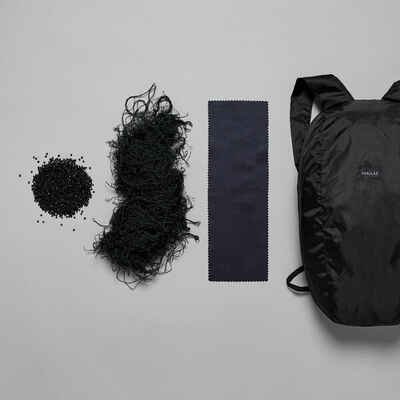Can you be sure that your boots are warm enough for your winter hikes?
We perform comparative studies carried out in a thermal laboratory, in walking conditions in light winds (5km/h). This is how we measure the thermal resistance of our boots. However every individual feels the cold differently.Comfort temperature: felt slightly cold & 70% of users find the thermal sensation acceptable on their feet.
Limit temperature: felt very cold & 10% of users consider the thermal sensation acceptable on their feet.
How do your boots protect you from outdoor conditions?
Your boots are designed with a membrane to guarantee waterproofing and breathability. A membrane is a very fine component (5 to 25 micrometres) affixed to the inside of a fabric that prevents water from entering while allowing moisture to escape.
How to care for Nubuck leather shoes
- Allow to dry away from a heat source
- On dry leather, brush with a stiff brush (horsehair and brass fibres) to remove sludge and dirt.
- Use a crepe brush or nubuck eraser to remove stains.
For stubborn stains, clean with a brush and a little warm water and leave to dry.
- Brush again with a stiff brush.
- Spray a waterproofing product. This will give shine to the leather and liveliness to the colour.
Eco-designed product
We developed this product with an eco-design approach.
The inner lining is dope dyed: Textile dyeing requires a lot of water but also produces waste water from the dye baths.
To reduce the environmental impact, we have opted for mass pigmentation (also called Dope Dye), integrating the colour pigments from initial thread manufacture.
The outer sole is made from 30% recycled rubber.
Breathable boots for optimal thermal comfort
Thermal comfort is a balance between the warmth of the boots and its ability to let the foot breathe. Too much heat or not enough breathability means that damp accumulates and cold can set in. We have designed your boots with your activity in mind, be it occasional or regular, with a membrane which prevents water ingress and lets damp out.
How can I be sure that my boots are 100% waterproof?
We made sure that your boots are waterproof by conducting laboratory tests to simulate walking with the boots half submerged in water. We also conducted field tests to measure wear and ageing. During the waterproofing test, we test 3 levels of waterproofing: 2000 flexes (approx. 4 km walk), 4000 flexes (approx. 8 km walk) and 8000 flexes (approx. 16 km walk). This model of boot has been tested for up to 4,000 flexes, which is equivalent to 8 km of walking.
What is the difference between traction and grip?
The traction of the boots depends on the number and shape of the studs. The grip is dependent on the materials of the sole and the tread pattern, like the tyres of your car. Traction optimises propulsion, prevents the boot from slipping backwards when going uphill and stabilises the boot.
Grip prevents the boot from slipping and skidding on smooth ground or in demanding conditions (rain, snow, ice) by giving the sole grip.
How does the SNOWCONTACT technology used on the boot sole help me?
SNOWCONTACT soles are made with a specific component and stud pattern that is designed to ensure the best possible grip and traction. SNOWCONTACT soles are more effective than traditional soles on snow. When walking on ice, the only way to ensure optimum safety is to add anti-slip grips to your boots.
Will your boots withstand regular use over the long-term?
Our engineers conduct laboratory tests to ensure that the product fully complies with your satisfaction in use. Our verifications include the following elements: tearing eyelets and straps, gluing, toxicology, UV resistance, abrasion resistance of outsole and upper components, accelerated ageing.
How do I choose the right footwear for snow hiking?
To be well equipped in winter, we recommend that you follow these guidelines : Warmth: warmth provided by a warm pair of socks (ideally containing a suitable percentage of wool)
Breathability: Choose the sock according to the intensity of the hike and make sure you wear a breathable model to minimise moisture.
Boot height: adapt the height of the sock to the height of the upper and preferably choose high models if you want more protection.
How to preserve the technical qualities of my boots?
A fabric's water repellent property is its capacity to make water run off its surface without seeping in. This prevents the fabric from soaking up water and keeps it lightweight, warm and breathable. The water repellent property is achieved by treating the fabric's exterior. This treatment needs to be renewed during the lifetime of the garment. Products (spray or liquid) for this purpose are available in our stores.
ADDITIONAL SUSTAINABLE DEVELOPMENT INFORMATION
We have improved this product with an eco-design approach.
The outer fabric and fur collar are made from recycled polyester.
The straps and laces are made from recycled polyester.
For the inner lining, we have opted for mass pigmentation integrating the colour pigments from the initial thread manufacture which reduces water consumption.
The sole is made from 30% recycled rubber.
 Process
Process Material
Material Material
Material